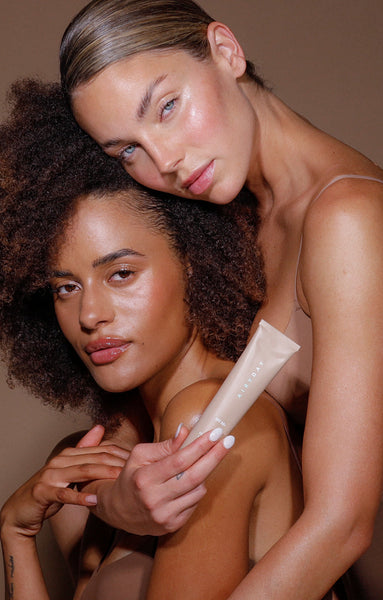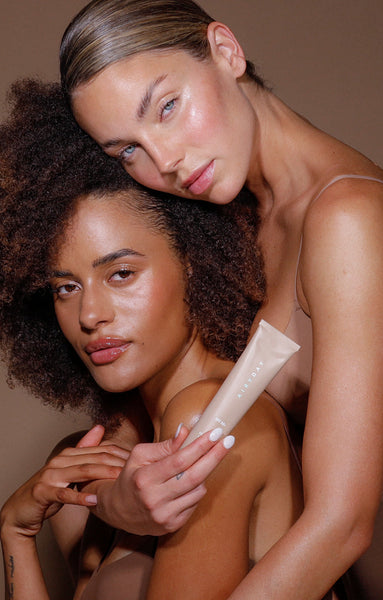HOW TO PICK THE RIGHT SUNSCREEN FOR YOUR FACE?
Are you struggling to find a facial sunscreen that works well for you? Let's chat!
Sunscreen is a non-negotiable, but we know its super important to find a sunscreen you want to wear, love and reapply 365 days a year. Why? Because sun damage is cumulative and doesn’t discriminate, so without it we ultimately we putt ourselves at risk of skin cancer and premature ageing.
There are two main parts to all sunscreen to making a decision on which one – the active ingredient and the formula you wish to use. One is no better than the other, but having a sunscreen that ticks all the boxes is the cherry on top.
First, let’s talk active ingredients.
When it comes to face sunscreen, understanding their formulations are important. There are two main types: chemical and physical sunscreens.
Chemical sunscreens act as a sponge and absorb the UV radiation and convert it to low levels of heat. Due to the approved active ingredients allowed in these formulas, we can create more sophisticated formulations that are lightweight, not sticky and feel breathable on the skin. Loved by most, there are a small portion of users with sensitive skin that find chemical sunscreens a little aggravating.
On the other hand, physical sunscreens act like shields and absorb and scatter UV radiation to prevent penetration, which come in the form of Zinc or Titanium Dioxide actives. These formulas are great for sensitive skins or skins feeling a little vulnerable. They tend to feel a little heavier on the skin and tend to have thicker formulas, so an oilier skin might avoid (except ours!).
Together they protect against UVA rays, which penetrate the deeper layers of the skin and contribute to skin cancer and damaging DNA, and UVB rays which are known to cause sun burn and put you at risk of skin cancer.
Protecting against both UVA and UVB rays is labelled as ‘Broad Spectrum’ protection on your sunscreen packaging and is strongly recommended for the best protection i.e. protecting you from premature ageing, burning and higher risk of skin cancer. The higher the SPF rating the better, so aim for an SPF50+.
Now, let’s find a formula and finish you’ll love.
Choosing the perfect facial sunscreen means considering factors like your skin type, concerns or the finish you prefer. Whether your skin is oily, dry, combination, or sensitive, we've curated a sunscreen that's perfect for you. Let’s break it down for you!
Clear as Day SPF50+: Perfect for dry, dehydrated and normal skins wanting a boost of hydration, she offers a dewy-satin and completely clear finish to the skin (chemical sunscreen).
Golden Glow SPF50+: Ideal for all skin types, including oilier complexions, she offers a light reflecting and golden luminosity for a satin touchable finish (chemical sunscreen).
Pretty in Zinc SPF50+: For sensitive and acne prone skins needs a little dose of Zen, she is a hydrating cream that feels breathable, leaving a second-skin finish with a subtle blur effect. Fragrance free. (physical sunscreen).
Mineral Mousse SPF50+: Perfect for an oilier complexion, her whipped texture that feels barely there, with a velvet matte finish and a slight blur effect. Fragrance free. (physical sunscreen).
All our sunscreens are supercharged with skincare goodness like Hyaluronic Acid, Vitamins C, E, F, Blue Light Protection, Niacinamide, Vegan Collagen and Blue Light Protection to ensure you’re protected inside-out. Plus, all our sunscreens can be used as a primer before make-up, are 40 minutes water resistant and perfect for daily use.
Apply it the right way
Patchy protection is a no-go in our eyes, so be sure to apply ½ teaspoon to face, neck, chest and ears. We always recommend reapplying every 2 hours, even if your sunscreen says 4 hours water resistance. However, if swimming or exercising with our formulas, please reapply every 40 minutes.
Still unsure? We offer 10ml eco-minis versions of all types for you to try, with up to 3 applications per tube.











